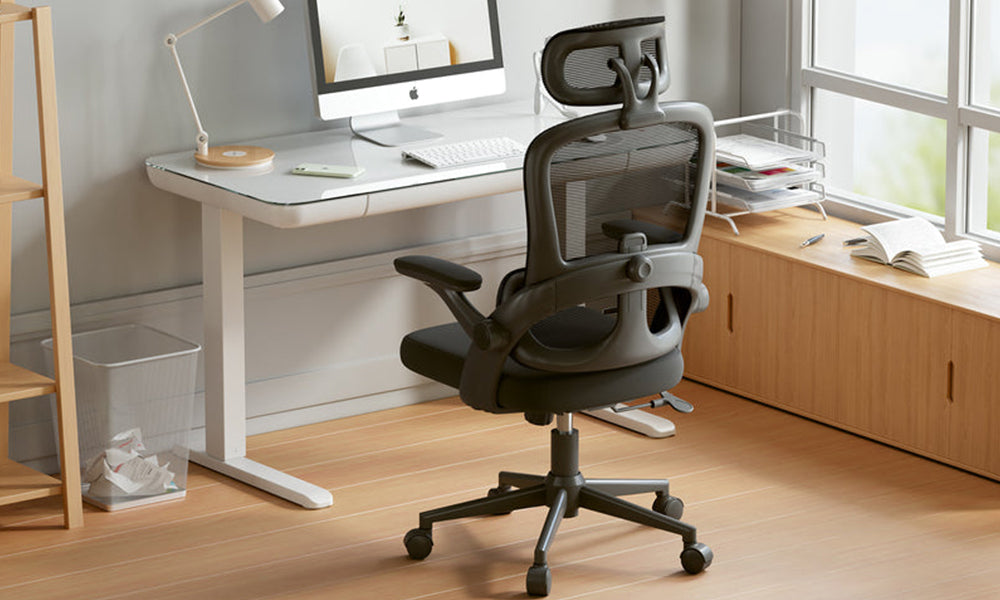Many of us spend most of our time sitting at a desk, so it’s crucial to prioritize ergonomics to ensure comfort, productivity, and long-term health. One of the fundamental components of an ergonomic workspace is the chair. Whether you're working from home or in an office setting, adjusting your chair properly can make a significant difference in your overall well-being. In this guide, we'll delve into the essential steps to ergonomically adjust your chair for optimal comfort and health.
Understanding Ergonomics
Before we dive into chair adjustments, it's essential to grasp the concept of ergonomics. Ergonomics is the science of designing and arranging things so that people can interact with them more efficiently and safely. In the context of a chair, ergonomic adjustments aim to support the natural curves of the spine, promote good posture, and reduce the risk of musculoskeletal disorders caused by prolonged sitting.
Key Adjustments to Consider
Seat Height:
Begin by adjusting the height of your chair so that your feet are flat on the floor or on a footrest if needed.
Your thighs should be parallel to the ground, and your knees should be at a 90-degree angle. This position helps distribute your weight evenly and reduces pressure on your lower back.
Seat Depth:
Adjust the depth of the seat pan to ensure there is a few inches of space between the edge of the seat and the back of your knees.
This adjustment prevents pressure on the back of your thighs and promotes better circulation.
Lumbar Support:
Many chairs come with built-in lumbar support, but if not, consider using a lumbar cushion or adjusting the chair to provide adequate support to the natural curve of your lower back.
Proper lumbar support helps maintain the natural S-shape of the spine, reducing strain on the lower back muscles.
Backrest Angle:
Adjust the backrest angle to recline slightly, around 100-110 degrees, to support the natural curve of your spine.
Avoid reclining too far back, as this can strain your neck and shoulders.
Armrests:
Adjust the height of the armrests so that your shoulders are relaxed, and your arms are parallel to the ground.
Armrests should provide support without interfering with your ability to move freely.
Headrest (if applicable):
If your chair has a headrest, adjust it to support the natural curve of your neck and provide comfort during moments of relaxation.
Additional Tips for Comfort and Health
Take Regular Breaks: No matter how well-adjusted your chair is, it's essential to take regular breaks to stand, stretch, and move around. Set a timer to remind yourself to take short breaks every hour.
Practice Good Posture: Even with an ergonomic chairs, maintaining good posture is crucial for long-term health. Sit up straight, with your shoulders relaxed and your back supported by the chair's lumbar cushion.
Invest in Quality: When possible, invest in a high-quality ergonomic chair that provides adjustable features and proper support. Your chair is an investment in your health and productivity.
Consider a Standing Desk: Alternating between sitting and standing throughout the day can further reduce the strain on your body. Consider using a standing desk or a desk converter that allows you to switch between sitting and standing positions.
Listen to Your Body: Pay attention to any discomfort or pain you may experience while sitting. Adjust your chair accordingly and consult with a healthcare professional if you continue to experience discomfort.
Conclusion
Ergonomically adjusting your chair is a simple yet effective way to improve your comfort, productivity, and overall health while sitting for extended periods. By following the key adjustments outlined in this guide and incorporating additional tips for comfort and health, you can create a workspace that supports your well-being and enables you to perform at your best. Remember, prioritizing ergonomics is an investment in yourself, ensuring you can work comfortably and sustainably for years to come.






Laisser un commentaire
Ce site est protégé par hCaptcha, et la Politique de confidentialité et les Conditions de service de hCaptcha s’appliquent.